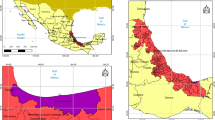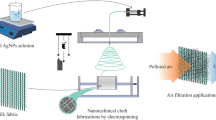Abstract
This research investigated the effects of heat transfer using vacuum insulation over a pipe for industrial application compared to fiberglass insulation for steel pipe. In this study, an experiment was conducted at various steam temperature. The experimental test was performed with 1 m length and 80 mm diameter of steel pipe at 27 \(^\circ{\rm C}\) temperature and 1 atm pressure working condition. The vacuum space created by single stage vacuum pump was having an ultimate vacuum pressure of 0.05 mbar. The performance of vacuum and fiberglass insulation had been studied. The basic concept of thermodynamics and heat transfer equations were applied to explain the experimental results. From the results, the performance of vacuum insulation was higher than fiberglass insulation. The cost of fiberglass insulation material was 0.05 US dollars per unit length and the vacuum insulation material was 0.34 US dollars per unit length 80 mm pipe diameter. The heat loss cost of fiber was 156.54 US dollars/yr per unit length and the vacuum insulation was 4.08 US dollars/yr per unit length. The net saving cost from vacuum insulation was 152.46 US dollars/yr per unit length of pipe. In general, the report on the performance of vacuum insulation was higher than fiberglass insulation in efficiency, cost, and environmental aspect for industrial application of pipes system.














Similar content being viewed by others
Availability of data
The findings of this study are available within the article.
References
Sahin AZ, Kalyon M (2004) The critical radius of insulation in a thermal radiation environment. Heat Mass Transf 40:377–382
Kisilewicz T, Fedorczak-Cisak M, Barkanyi T (2019) Active thermal insulation as an element limiting heat loss through external walls
Wales C, Tierney M, Pavier M, Flewitt PE (2011) Reducing steam transport pipe temperatures in power plants
Kaynakli O (2014) Economic thermal insulation thickness for pipes and ducts. Renew Sust Energ Rev
Daşdemir A, Ural T, Ertürk M, Keçebaş A (2017) The optimal economic thickness of pipe insulation considering different pipe materials for HVAC pipe application. Appl Therm Eng
Alam M, Singh H, Suresh S, Redpath DA (2017) Energy and economic analysis of Vacuum Insulation Panels (VIPs) used in non-domestic buildings. Appl Energy 188:1–8
Choi B, Yeo I, Lee J, Won Kyeong Kang, Tae-Ho Song (2016) Pillar-supported vacuum insulation panel with multi-layered filler material. Int J Heat Mass Transf 102:902–910
Thiessen S, Knabben FT, Melo C, Gonçalves JM (2018) A study on the effectiveness of applying vacuum insulation panels in domestic refrigerators. Int J Refrig. https://doi.org/10.1016/j.ijrefrig.2018.09.00
Kim JH, Boafo FE, Kim SM, Kim JT (2017) Aging performance evaluation of vacuum insulation panel (VIP) case studies in construction materials 7:329–335
Wang T, Diao Y, Zhao Y, Liang L, Wang Z, Chen C (2020) A comparative experimental investigation on thermal performance for two types of vacuum tube solar air collectors based on flat micro-heat pipe arrays. Sol Energy 201:508–522
Choi B, Song TH (2017) Investigation of edge taping method applied to vacuum insulation panels. Energy Build 134:52–6
Berge A, Hagentoft CE, Adl-Zarrabir B (2016) Field measurements on a district heating pipe with vacuum insulation panels. Renew Energy 87(3):1130–1138
Shaikh AS, Durrani HA, Junejo A, Kumar D (2018) Experimental investigation of optimum insulation thickness for air conditioning duct. Int J Innov Res Technol Sci Eng 2(2)
Verma S, Singh H (2019) Vacuum insulation in cold chain equipment: a reviews. 2nd International Conference on Sustainable Energy and Resource Use in Food Chains, ICSEF 2018, 17–19 October. Energy Procedia 232–241
Lorenzati A, Fantucci S, Capozzoli A, Perino M (2016) Experimental and numerical investigation of thermal bridging effects of jointed Vacuum Insulation Panels Alice. Appl Therm Eng 98:256–264
Lorenzati A, Fantucci S, Capozzoli A, Perino M (2015) Assessing the thermal performance of district heating twin pipes with vacuum insulation panels. Energy Procedia 78:382–387
Nussbaumer T, Wakili KG, Tanner C (2006) Experimental and numerical investigation of the thermal performance of a protected vacuum insulation system applied to a concrete wall T. Appl Energy 83:841–855
Lund R, Mohammadi S (2016) Choice of insulation standard for pipe networks in 4th generation district heating systems. Appl Therm Eng 98:256–26
Basogul Y, Kecebas A (2011) Economic and environmental impacts of insulation in district heating pipelines. Energy 36:6156–6164
Winiarski DW, Somasundaram S (1997) Analysis of cost-effective pipe insulation requirements. Energy Eng 94(3):32–35
Daouas N (2011) A study on optimum insulation thickness in walls and energy savings in Tunisian buildings based on an analytical calculation of cooling and heating transmission loads. Appl Energy 88:156–166
Author information
Authors and Affiliations
Contributions
ATA-research conception, materials, writing of original manuscript, experimental work, OSF-Data analysis, literature review, writing of original manuscript, proof reading of manuscript.
Corresponding author
Ethics declarations
Ethics approval and consent to participate
Not applicable.
Consent for publication
All authors consent to the publication of the manuscript.
Conflict of interest
The authors declare no competing interests.
Additional information
Publisher's Note
Springer Nature remains neutral with regard to jurisdictional claims in published maps and institutional affiliations.
Rights and permissions
About this article
Cite this article
Alamnia, A.T., Fatoba, O.S. Experimental investigation on the effects of heat transfer using vacuum and fiberglass insulations over pipes for industrial application. Int J Adv Manuf Technol 120, 7415–7431 (2022). https://doi.org/10.1007/s00170-022-09206-z
Received:
Accepted:
Published:
Issue Date:
DOI: https://doi.org/10.1007/s00170-022-09206-z




